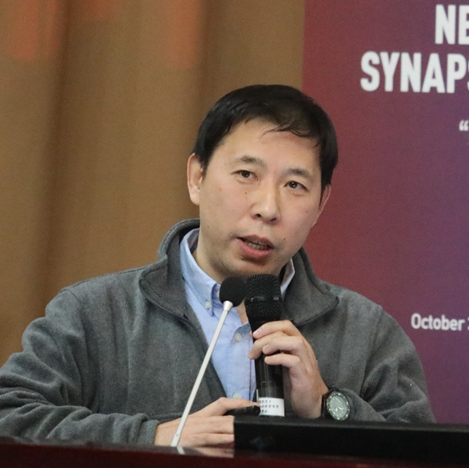时 间: 2018年3月29日? 14:00-15:30
地 点: 清华大学生物新馆143
讲座嘉宾:章晓辉教授,北京师范大学认知神经科学与学习国家重点实验室

主持人:时松海,清华大学生命科学学院教授,清华-IDG/麦戈文脑科学研究院研究员
题目:Circuitry Mechanisms Underlying Brain Plasticity and Associative Learning
摘要:Diverse types of neurons are interconnected via local or long-range synapses to form specific neural circuits for executing particular brain functions and behaviors. ?Among the neuron constituents in many circuits, different subtypes of interneuron that releases inhibitory transmitter g-amino butyric acid (GABA) greatly enhance the complexity of circuit architecture and dynamic regulation. ?In the talk, I will present recent findings of our laboratory on the connectivity, function and plasticity of the hippocampal-cortical circuit, more emphasis on that of GABAergic inhibitory circuits. ?First, by extensive electrophysiological recording in the developing visual cortex ex vivo and in vivo, we have elucidated the circuit basis for the long-standing inhibition gating mechanism underlying a heightened experience-dependent cortical plasticity during a postnatal critical-period over development, as well as for the dynamic regulation of rhythmic cortical activity (oscillations) by distinct inhibitory cell circuits.? Second, using viral-tool or ChR2-assisted circuitry mapping, we have delineated the fine-scale connectivity of an entorhinal cortex (EC)→hippocampal CA1 direct-circuit that is required for olfactory associative learning. ?On both technical and intellectual aspects, these findings also establish a solid basis for our further studies that unveil the principal maps of local and long-range connections of cortico-hippocampal circuits and a potentially novel form of plasticity in these circuit architectures induced by learning or early experience.
